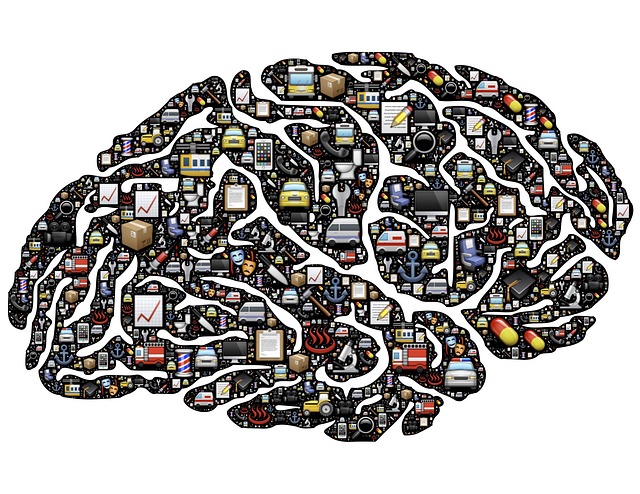The more you understand about how people behave, the easier it is to sell to them. Sounds obvious, right? But how much do we really know about what drives our behaviour?
And how much more could you sell if you connected your marketing to how people really make choices and decisions?
Giants of the advertising industry like David Ogilvy and Claude Hopkins wrote extensively about behaviour, testing and measurement. Experience of running successful campaigns gives you a sense of what might work. But until you measure how specific prospects act after seeing different versions of an ad, you never know for sure which approach will deliver the most sales.
“Never stop testing, and your advertising will never stop improving” David Ogilvy
On a less grand scale I’ve seen market traders use insights into buyer behaviour to develop their ‘act’. The patter and techniques that draw a crowd. The spiel that convinces onlookers they will miss the bargain of the year if they don’t get their wallets out immediately.
Arguably, experienced market traders have developed a better understanding of their customers’ psychology than many brands.
Understanding behaviour
For large brands, extracting usable insights from customer behaviour has always been a challenge. Market research rarely proves a reliable guide because it asks people to rationalise decisions that are largely made instinctively and subconsciously.
Data, on the other hand, helps you to measure behaviour. By definition, this is what it is. The volume of data it’s possible to collect through on-line selling can become overwhelming, though.
Increasingly, data is able to reveal insights you can trust. No surprise that big data, data mining and analysis are such hot topics. There are rich prizes on offer for brands that can squeeze reliable insights from all the behavioural data they can and should be collecting.
Why are we irrational?
But a greater understanding of how people behave is only part of the story. Effective marketing campaigns also need clarity about why people behave the way they do.
Adding the why to the how helps you develop future campaigns with much greater confidence. Here too, technology is providing a clearer picture.
Neuroscience is confirming what the best marketers have always suspected. That our decisions and actions are to a large degree sub-conscious and emotionally-driven.
Neuroscientist and TED speaker David Eagleman uses a dramatic analogy. Think of your conscious mind being a stowaway on an ocean-going liner, convinced that you alone are responsible for everything that keeps the ship moving and headed on a specific course.
Eagleman’s theories on the extent to which the subconscious drives behaviour aren’t universally accepted. But nobody disputes that it is hugely influential. Decisions are driven by our emotions, experiences, inherited prejudices and even our physiology, not just by what we consciously think.
Neuroscience and marketing – how we decide
Through technology we can examine what’s happening in our brains when we process information and make decisions. One astonishing fact it has revealed is that without engaging our emotional network we lose the ability to make even simple choices.
Brain injuries to the frontal cortex sometimes disconnect the emotional from the logical decision networks. People with these injuries lose the ability to decide whether they want cheese and onion or salt and vinegar crisps, never mind which brand.
They can absorb and process the information rationally and logically, but they can’t decide. Just think about what that means.
To make a simple purchase or a decision about what to eat for lunch we need to use our emotions.
So what does this mean for marketers, and content marketers in particular?
Does your marketing plan consider the most fundamental psychological drivers that determine how your customers act?
Clearly your marketing must meet all the informational needs of your customers. Nobody will buy something they don’t understand or don’t see the point of. But unless you tune into and stimulate the right emotions, you are significantly less likely to trigger the act of purchase.
A great deal of marketing content deals with the factual. It’s essentially helping customers to make a decision by providing information. You are feeding the logical network but not the emotional.
This is about more than saying how you will save time or money – those are practical, rational considerations.
When you understand emotional drivers you can master the vocabulary and images to create associations. Subconscious links with the things people really value: influence, status, social connections, order, acceptance, family and so on.
The power of imagination and stories
Again, marketers have long understood that inviting people to imagine what they will do with the time they save is more powerful than quantifying it. Telling stories about how people discovered a product and how it transformed their life has more resonance than the simple facts.
Neuroscience may uncover how mirror neurons play a part in stimulating empathetic brain processes and give us a scientific explanation for all this. And it could lead to a clearer understanding of stories and images that are the most powerful.
Even now you could be using greater psychological understanding to improve conversion rates on emails, landing pages and product pages. You can use it to draw people into your content.
Once you understand what the psychological drivers might be, you can test different approaches. The data will then confirm which ones really trigger actions and decisions in your customers.
One day data and neuroscience may yield all the answers. For now, you can probably be doing much more with what we already understand.
This article was also published on my LinkedIn profile.

